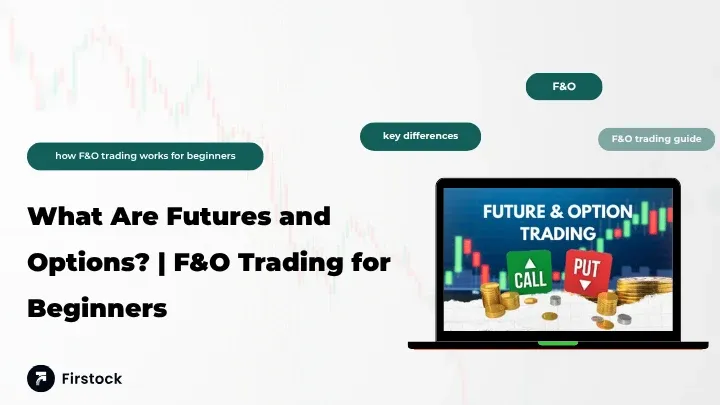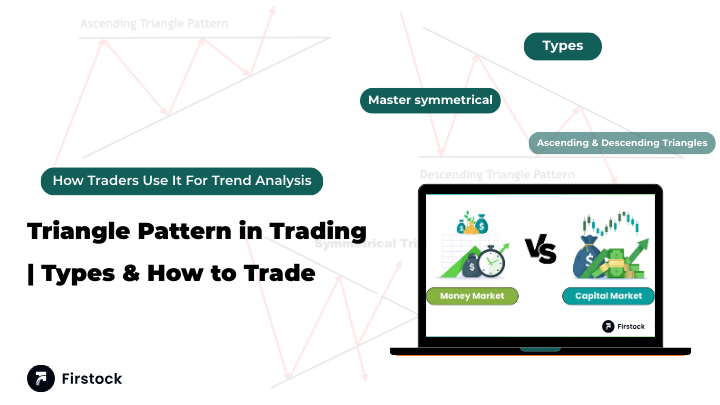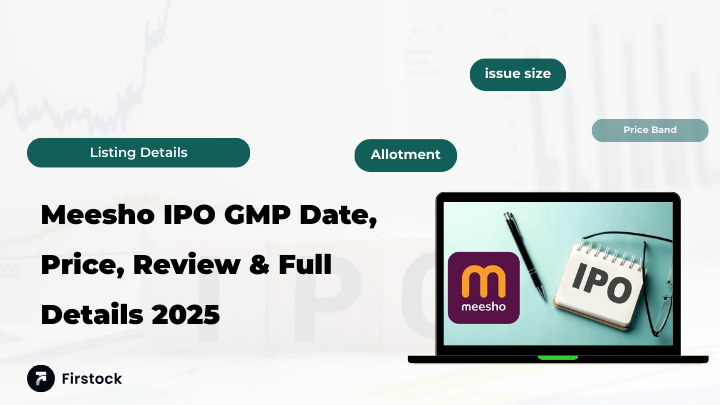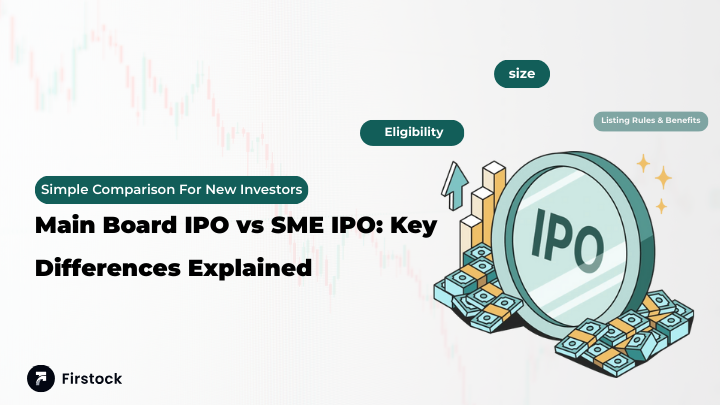What Are Futures and Options? | F&O Trading for Beginners

Futures and Options Trading for Beginners
Futures and options may be the first terms that come to mind when describing financial experts working behind a jumble of screens. The thing is, these terms are not only for experts. It is an organized and regulated section of the Indian stock market that facilitates traders to hedge, speculate or manage their risks through contracts that have already been standardized.
Here lies the difference between futures and options trading meaning, its very procedural working, the dissimilarities between futures and options, and what newcomers should know before stepping into this market.
⚠️ Disclaimer: This article is for educational purposes only and does not constitute trading or investing advice. Always perform your own research or consult a certified financial advisor before making any trading decisions.
What Are Futures and Options?
Futures: A Short Narrative
A futures contract is a legal bond between the seller and the buyer to conduct the transaction (stock or index, most probably) at a previously fixed price on a certain future date.
In a similar way, to buying a ticket beforehand — you agree on the price (rate) today for a trip that you will do later. So in futures trading, you agree on the price of a stock or index today for a trade to be done later.
For instance:
Just imagine that you foresee the NIFTY (the index) going up within the next month. What you can then do is a futures contract at the price of today, and sell it later at a profit if it goes up.
But, if the market keeps moving counter to your position, you will have to bear the loss. Futures contracts entail profit as well as loss potentials, based on market direction.
Options: A Short Narrative
Options are less rigid than futures in some respects. They provide the party with a right only, not an obligation, to purchase or dispose of the asset for a predetermined price within a certain timeframe.
These are only two types of options:
Call Option: The sole right to buy the specific asset
Put Option: The sole right to sell the specific asset
For instance:
Lets say you bought a call option on Reliance at ₹2,500 and subsequently, the stock rose to ₹2,600. You are entitled to purchase at ₹2,500 and immediately sell at ₹2,600 making a profit. If it moves down instead, you can simply let the option expire. Your loss will be limited to the premium you paid for that option.
That’s one reason many traders start learning with options — they allow limited risk and potentially higher flexibility.
Futures and Options Trading Meaning and Differences
Let’s simplify this comparison:
Both are powerful tools in the stock market when used responsibly — but they require understanding, strategy, and discipline.
How Futures and Options Work in the Indian Stock Market
The Indian stock market, through exchanges like NSE (National Stock Exchange) and BSE (Bombay Stock Exchange), offers futures and options on:
- Stock indices (e.g., NIFTY, BANK NIFTY)
- Individual stocks (e.g., Infosys, Reliance, HDFC Bank)
- Commodities and currencies (through separate segments)
When traders place F&O orders, they do it through a SEBI-registered broker like Firstock, which provides a regulated stock trading app with margin support, live charts, and backtesting tools for better decision-making.
⚠️ Disclaimer: F&O trading carries market risk. Past performance of an index or stock does not guarantee future results.
Why Futures and Options Exist
Many beginners ask — why do we even need F&O trading when we already have normal equity trading? The answer lies in three core purposes:
- Hedging: To protect against price fluctuations
- Example: A farmer can lock in a price for crops using futures. Similarly, investors can lock in stock prices.
- Speculation: Traders can try to profit from expected price movements.
- Arbitrage: Traders exploit price differences between markets for low-risk profits.
Each purpose comes with its own level of complexity and risk tolerance.
Understanding Margins and Leverage in F&O
When you trade futures and options, you are not required to pay the full value of the contract upfront. You only deposit a margin that represents a small percentage of the total contract value.
Leverage is the concept that comes into play here — it permits traders to hold a large position with less capital.
For instance:
Let the value of a NIFTY futures contract be ₹10 lakh and the margin requirement be 10%, then you must deposit only ₹1 lakh.
However, keep in mind that leverage will increase your gains as well as your losses.
⚠️ Disclaimer: Leveraged trading is riskier. You can lose more than your initial capital.
Example: Futures and Options in Real Action
Let’s say you expect Infosys stock (currently at ₹1,500) to rise next month.
- Futures: You buy a futures contract at ₹1,500. If it rises to ₹1,550, you make ₹50 per share. If it drops to ₹1,450, you lose ₹50 per share.
- Options: You buy a call option with a strike price of ₹1,500 by paying a ₹20 premium.
- If the stock goes to ₹1,550, your profit is ₹30 (₹50 increase – ₹20 premium).
- If it drops below ₹1,500, your loss is limited to ₹20.
This demonstrates how options trading allows controlled risk exposure.
Futures and Options Trading Strategies
Some popular backtested trading strategies used by professionals include:
- Covered Calls (earning premiums while holding stocks)
- Straddles and Strangles (for volatile markets)
- Bull/Bear Spreads (for directional bets)
- Hedging Portfolios (reducing downside risk using derivatives)
While Firstock offers advanced charting tools to evaluate these strategies, remember: no strategy guarantees profit.
⚠️ Disclaimer: Strategy results vary based on market conditions. Always assess your risk before implementing any trading approach.
Taxation and Settlement in F&O Trading
Trading in futures and options leads to either profits or losses, and these are treated as business income for tax filing in India.
Similarly, all the used brokerage, internet, and other related expenses can be included in the trading expenditure.
As F&O transactions are completely cash-settled, you get the money equivalent to what you sold, not the physical shares.
The best thing to do is be very meticulous with your documentation and get the filing done by a tax professional.
Getting Started with F&O (Educational Overview)
The following is the newby’s method to derivatives trading
Start with learning: Know the concept of futures and option trading.
The opening of a trading and demat account is required: Firstock makes the process of onboarding user-friendly and transparent.
Try simulated trading at first: The majority of platforms grant virtual trading practice that allows you to increase your trading skill with no risk involved.
Know margin, risk, and capital allocation: It’s very important to be aware of your risk capacity before entering into a trade.
Review and track: Analyze with up-to-date data and market movements each trade you have made.
⚠️ Disclaimer: F&O trading is. a. high-risk activity that is not suitable for all investors and requires experience, understanding, and risk control.
Conclusion: Building Knowledge Before Trading
Futures and options trading for new beginners can be a fantastic entry to the complex world of financial markets. The understanding of futures and options trading meaning, the whole mechanism and risk management, forms the main pre-requisite to any action.
Firstock enables traders to learn, analyze, and experience the markets through user-friendly tools and transparency. Yet, at the core — knowledge, patience, and responsible trading are what count the most.
⚠️ Final Disclaimer: The risk involved in derivatives trading is significant and may not be suitable for every investor. Always operate within your financial limits and take a professional’s advice if in doubt.
FAQs on Futures and Options Trading for Beginners
1. What are futures and options?
Futures and options mean a combination of derivative contracts that take their value from an underlying asset such as a stock or index. Futures are the kind of contracts where the parties have set and agreed on the terms and conditions to be followed in the future. On the other hand, options are contracts that grant the owner the right to buy or sell an asset or a group of assets at a predetermined price within a specified time frame, but without the obligation to do so.
2. Are derivative trades like futures and options risky?
Yes, derivative trades like futures and options (F&O) are extremely risky. Due to their leveraged and volatile nature, they can make traders face substantial losses if they do not manage their positions cautiously.
3. How are futures different from options?
Both the buyer and the seller are required to abide by the conditions specified in each futures contract. An options contract's clauses give the buyer the right, but not the responsibility, to carry out the terms of the agreement, and the maximum loss the buyer may sustain is capped at the option premium.
4. Are there any special accounts for trading F&O?
Yes. A derivatives-powered trading account with a SEBI-licensed broker is required to trade in the derivatives market.
5. Can a novice trade in F&O?
Yes, a beginner can acquire the fundamental knowledge of the concepts involved in F&O, but he should be very careful while doing the actual trade. It is absolutely necessary to engage in trading only after getting the right kind of education and being fully aware of the accompanying risks.





